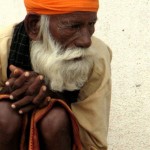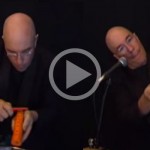
Located in the southern Caribbean sea, the island of Curaçao is the largest island of the lesser Antilles and is comprised of many ethnicities including Arawak, Dutch, Spanish, West Indian, Latin, and African. Although Dutch is the Curacao official language, and English and Spanish are also widely spoken, many residents speak Papiamentu — a Creole mixture of Spanish, Portuguese, Dutch, French, English, and Arawak Indian. The main language, Papiamentu, is encompassing many African influences and was once used to bridge the gap between the slaves and owners.
Being the dominant group on the island, African descendant have ensured that many of their ancestral cultural practices and traditions were preserved. The in influence of their African orijin is pronounced in many aspect of life, including music, dance and language. Brought to the island as slaves by the Ducth in the 17th century, Africans in Curaçao have managed to maintain their connection to their ancestral homeland through dances such as the tambú. A product of the slave knit communities on the island, tambú served as the cultural expression of an oppressed people.
Using the basic instruments of a drum (also known as the tambú ), the chapi (hoe) and heru, an iron idiophone, which are beaten into rhytemic patterns, he tambú dance requires isolation of body parts with elaborate hip gyrations. While the moves of the tambú are often referred to as “suggestive,” it follows a strict etiquette of no physical touching, which is said to add to the eroticism and sexual appeal of the dance. Due to the suggestive nature of the dance, it was long banned and persecuted for many years by the Catholic Church and government. However, despite colonial efforts to cub an abolish aspects of their African ancestry and orijin, African descendants in Curaçao developed creative ways to evade persecution and remain connected to their African ancestry.
Taking from the practice of their African ancestors, tambú is almost always accompanied by singing which follow a call and response pattern. Dubbed the “Curaçao blues,” tambú music provided as a means for slaves in Curaçao to express their sarrows and hardships on plantations.
Today, tambú music and dance serves not only as a means of entertainment, but also as a representation of African culture, ancestry and history in Curaçao.
Tambú: The banned Music & Dance of Afro- Curaçao
Inspired by Bob Marley’s philosophy “None but ourselves can free our mind”, Orijin is a unique “Culture Brand” connecting all African descendants together through it’s Fashion brand and thought provoking magazine to influence our lifestyles world wide….Don’t just WEAR Culture, SHARE Culture.
The following two tabs change content below.


Nickname: Queen of Kings. "I tell it as it is"
Latest posts by Nekita (see all)
- Before Rihanna there was Grace Jones - December 27, 2014
- Marimba: Expression of Freedom, yet my Afro-Ecuadorians… - December 25, 2014
- Who Makes Claim to Being the Reggae Capital of the World? - December 24, 2014



